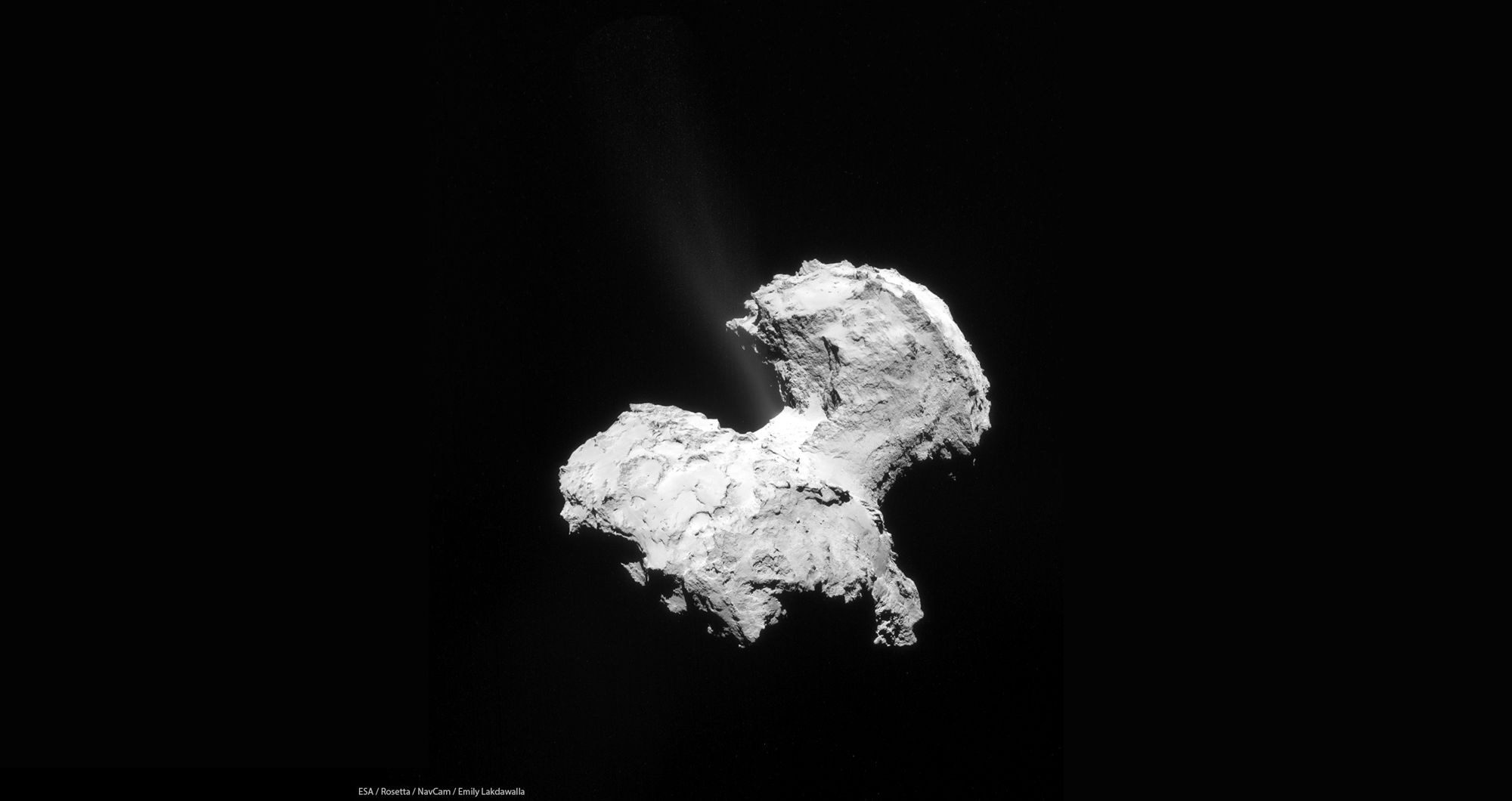Create a free profile to get unlimited access to exclusive videos, sweepstakes, and more!
Incredible, must-see video: 'The Comet,' a film noir view of 67P

On September 30, 2016, the Rosetta mission officially came to an end. It had orbited the comet 67/P Churyumov-Gerasimenko for two years, taking over 100,000 images of the comet's nucleus, some from quite a distance, some from mere meters away.
It revealed a bizarre landscape with sharp cliffs, huge boulders, pits where subsurface gas escaped, smoothed regions sculpted by the ethereally faint whisper of that same gas leaking out… and even, in one particularly gasp-worthy sequence, a dusty snowstorm from the comet that has to be seen to be believed.
In a moving and stunning tribute to this mission, artist and photographer Christian Stangl has made an incredible video, taking these images to create footage that is both stark and beautiful in a way that's hard to describe. So instead, just watch [make it full screen and hi-res, and turn the sound up a bit, too]:
Whoa.
He mixes real images with some enhancements to bring out details or provide context, but overall the comet images themselves are from the spacecraft itself.
As many times and as many hours as I spent poring over those images as they were released, it still jolts me to see them this way. The comet is as alien a place as we have in the solar system. You can see the jagged, rock-strewn surface in some places, and the smoother, sculpted-looking areas at the same time… and in fact those areas are sculpted, eroded by the stream of gases which leak out from surface vents as the comet is warmed by the Sun.
The few scenes of the dusty ice flakes flowing is just stunning. You can see them moving in one direction close to the camera, and another way in the background, providing a sense of depth that you can only get in moving pictures. If anything, to me it makes the comet seem even more alien.
Stangl’s bio on Vimeo says, "[he] photographs nightmarish scenes… He is constantly looking for the strange dark side of motifs…" He is quite successful here… except "nightmarish" isn't the right word to to me. It's more of a noir dream.
The music enhances the experience, too, giving strange beats and melodies that are hard to follow. At several points in the video you can hear a rapid fluttering pulsation (for example, starting at the 2:07 mark); this was clever of him to use. It's actually data from a group of scientific instrument on Rosetta called the Rosetta Plasma Consortium, designed to measure the plasma environment around the comet. Plasma is like a gas, but the atoms in the gas have been stripped of one or more electrons, making them susceptible to magnetic fields. The RPC detected very slow changes in the magnetic field around the comet, the cause of which is unknown. They may be due to gas emitted by the comet becoming ionized and reacting with the Sun's solar wind, but no one is really sure. Anyway, the measurements were sped up by a factor of about 10,000 then converted into sound by German composer Manuel Senfft to create the weird beating sound Stangl used in the video.
67/P is not the first comet we've seen up close, but it's the first to have a spacecraft orbit it and be mapped extensively. The Rosetta mission revealed to us a strange world, from its overall shape to its finely detailed surface, and even what lies below. We learned so much from this mission, revolutionizing how we think about these cosmic snowballs… and really, it's just the first step. There's so much more to learn.
I'll leave you with another video, made in cooperation with European Space Agency that built Rosetta. If you haven't seen it, well then, you're in for a treat. It's why we do things like send missions to comets.


























